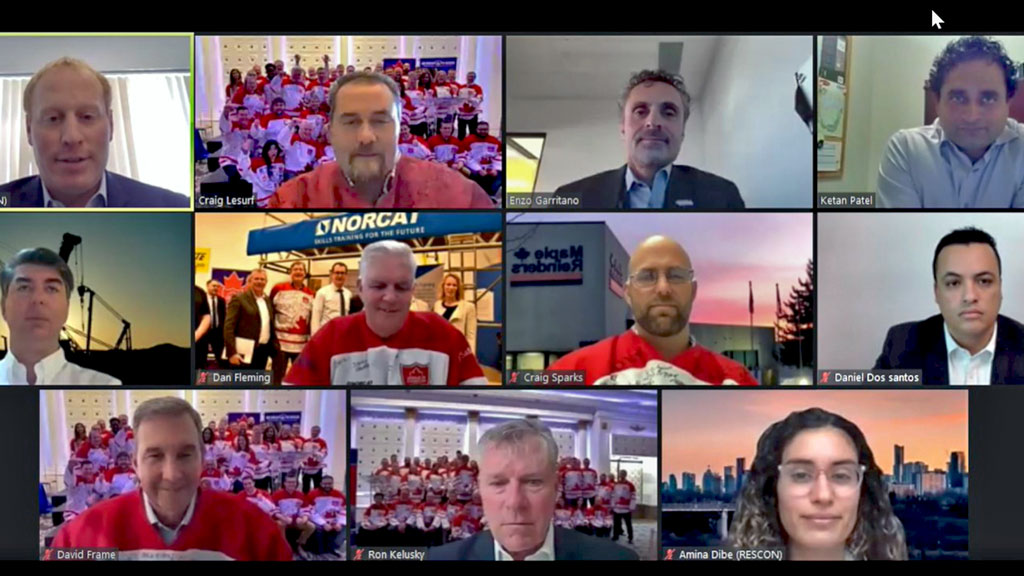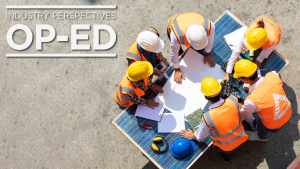With the arrival of the second wave of COVID-19 comes new challenges on construction sites, especially as the cold weather arrives.
That was the message from panellists during a recent webinar entitled Protecting your Workforce during the Second Wave, presented by the Residential Construction Council of Ontario and the League of Champions.
“The second wave has come, probably stronger and sooner than we expected, but it has come all the same. We must fight complacency and set an example for all other sectors in Ontario,” said Andrew Pariser, vice-president of RESCON, who MC’d the event.
“The good news is this time we have the information that we need and we know what to expect and what to do. This is a great advantage compared to March when new information was at a premium. The task is now to implement and execute.”
The virtual event, which included the panel discussion On-site Best Practices: COVID-Proofing Your Worksites and Offices, brought together infrastructure, residential and ICI sectors as well as Minister of Labour and Skills Development Monte McNaughton and Chief Prevention Officer Ron Kelusky to share their experiences since the onset of the pandemic in the spring.
Ketan Patel, senior health and safety manager at Tribute, a highrise and lowrise developer, said some jobsites are experiencing complacency with the protocols put in place over the spring and summer.
“Going into the fall we’ve seen other challenges with back to school and we’re having some issues there where people are uncomfortable again because we can’t forget that this virus is not only a workplace problem, it’s a community problem,” said Patel. “Once workers leave our jobsite sometimes we don’t know where they’ve been over the weekend. When they are coming back into the work environment we have to consistently put the message out there that the virus is still there and you have to take all the practices and protocols we introduced in the first wave and continue with it. That’s the only way we can control it.”
Washing stations, washroom facilities and personal protective equipment are also going to be a challenge on some sites going into the winter months.
You have to start early, start now, don’t wait another month because you will be behind the eight ball,
— Enzo Garritano
Infrastructure Health and Safety Association
“We’ve got empty lots where we are challenged to have water and power, so what we are doing is we’re having some comfort stations in portable self-contained units,” said Patel. “The sites that are well underway, we’re going to move the wash stations and washrooms indoors into vacant units or vacant homes which we haven’t closed yet. The challenge with that is going to be the transient nature of our business. We keep closing homes and we have to move these wash stations.”
Communicating a consistent message to workers and trades on all sites is key.
“What we’ve done is instead of sending mixed messages through different channels, we have a group email set up for our trades, a group email set up for our workers onsite, so everyone is getting a message from one specific person,” explained Patel.
Craig Lesurf, president of Gillam Group and chair of the League of Champions, emphasized the importance of being prepared and having plans in place.
“It’s a matter of getting prepared and realizing every job is different and that you are going to have a bunch of unique plans,” said Lesurf.
“As everybody is checking in for their screening in the morning, we’re going to be telling everybody what is going on for the day, if something is changed from yesterday, where they can find available washrooms and hand washing facilities.”
One of the things the industry did really well during the first wave was share, added Lesurf.
“Whatever I am doing I am happy to give to you and vice versa,” said Lesurf.
“Everybody has to understand that in order for your staff to feel safe they have to see leadership and they have to see people actually stepping up and doing it.”
Planning needs to start now said Enzo Garritano, president and CEO of the Infrastructure Health and Safety Association, which has provided the industry with a number of resources through their website and will be communicating what changes are necessary on worksites as the weather changes.
“You have to start early, start now, don’t wait another month because you will be behind the eight ball,” he said, adding where workers take breaks and tool cleaning may become even more important in the next few months.
“We’ve also got leaky noses and you might get some of that on your gloves and then you touch the tools and it gets on the tools.”
The panellists agreed reviewing and reinforcing best practices is critical.
“Review your practices, what you have done since March and review them in the context of the changing weather,” Garritano advised. “Reinforce practices so people know that you are taking it seriously as community and as a workplace you are going in the same direction.”
Follow the author on Twitter @DCN_Angela.











Recent Comments
comments for this post are closed